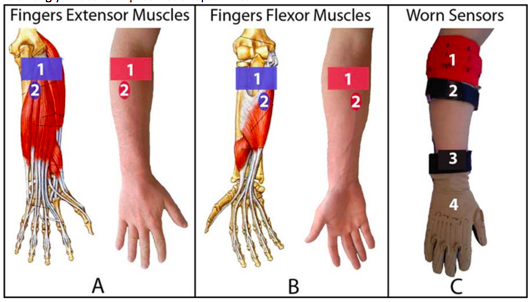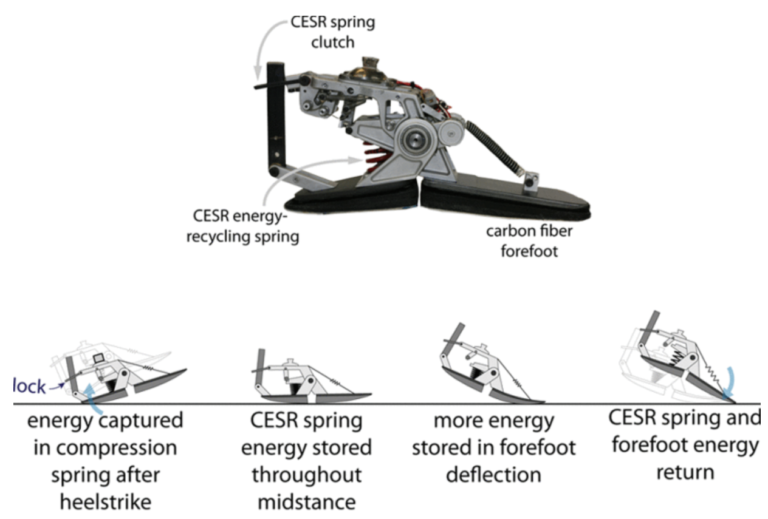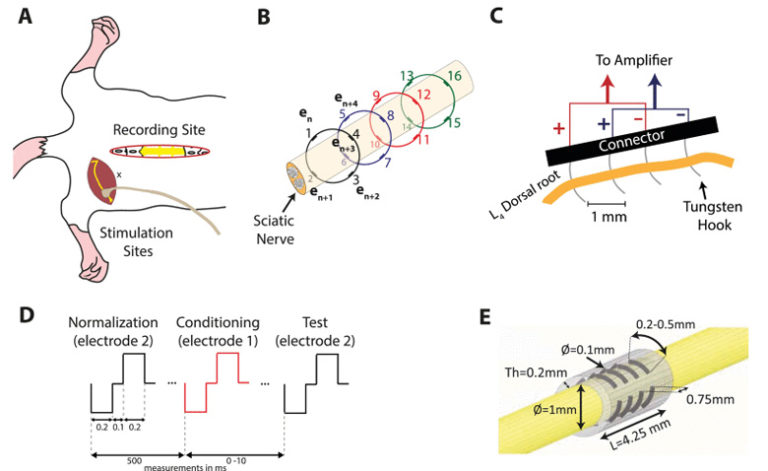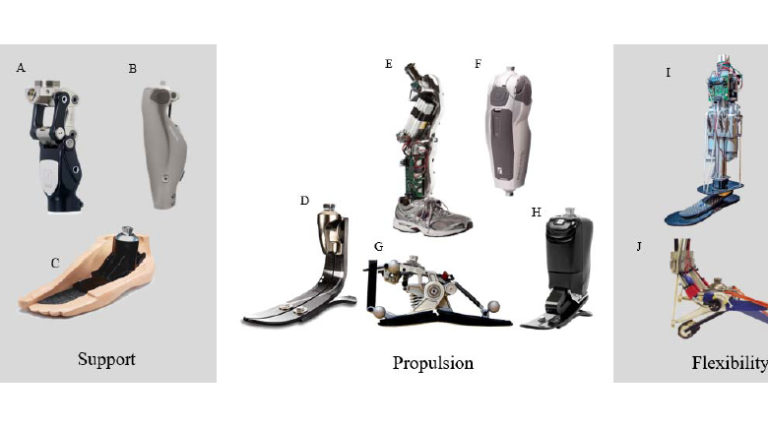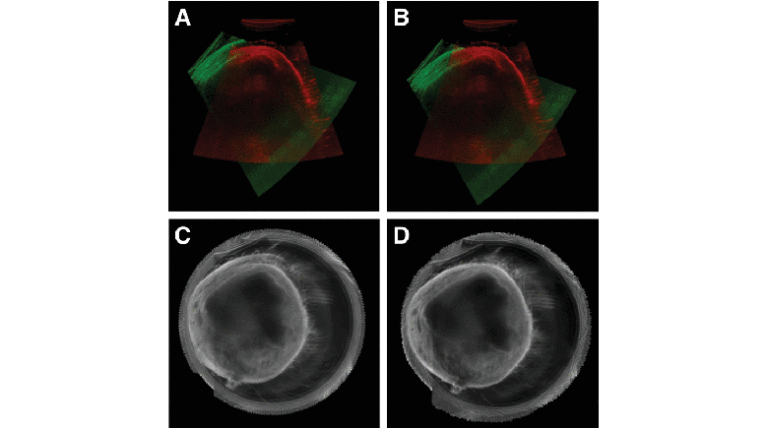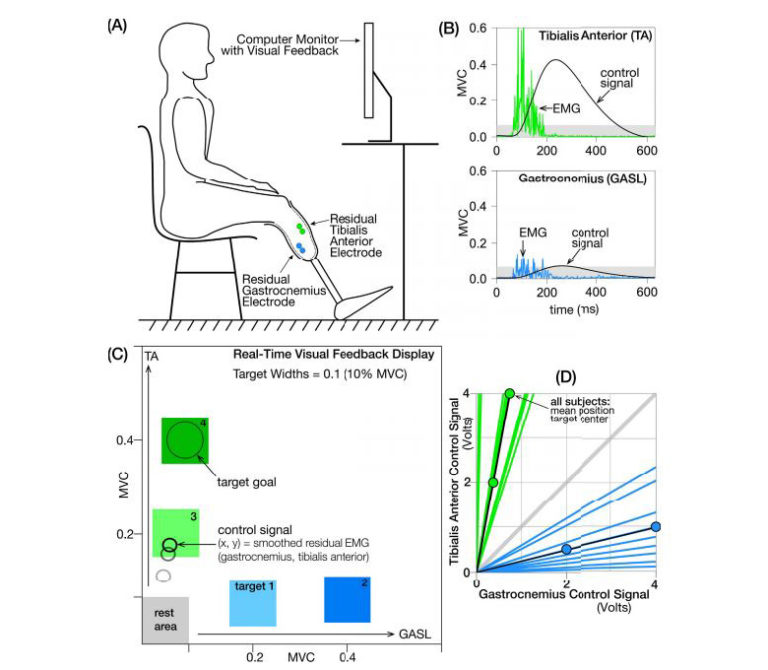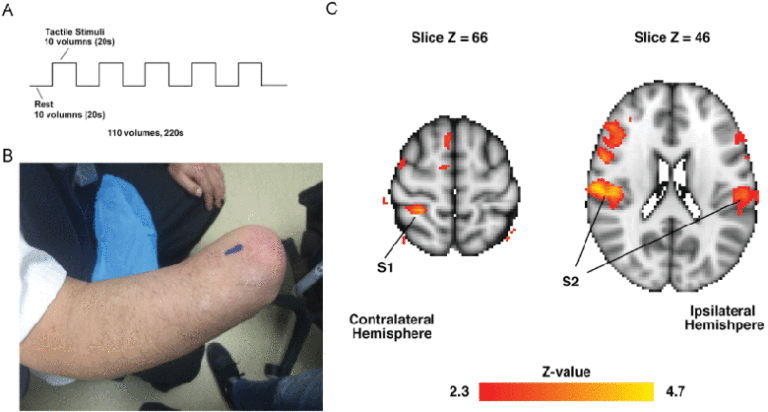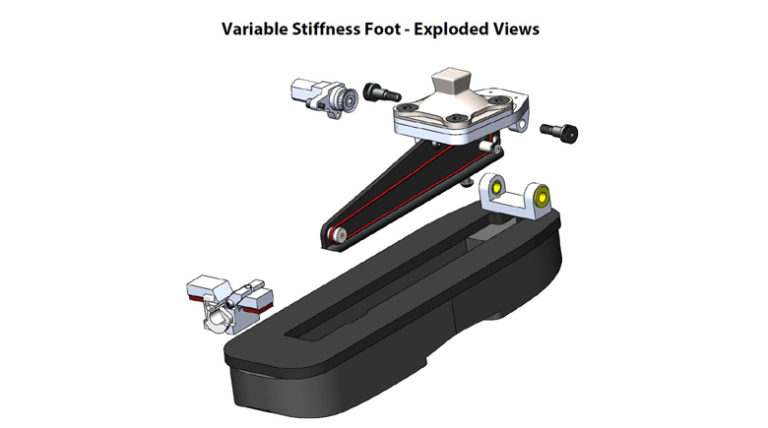In this paper, we characterize the Ninapro database and its use as a benchmark for hand prosthesis evaluation. The database is a publicly available resource that aims to support research…
read moreLower-limb amputees expend more energy to walk than non-amputees and have an elevated risk of secondary disabilities. Insufficient push-off by the prosthetic foot may be a contributing factor. We aimed…
read moreMulti-channel nerve cuff electrode arrays can provide sensory feedback to prosthesis users. To develop efficacious stimulation protocols, an understanding of the impact that spatio-temporal patterned stimulation can have on…
read moreThis paper aims to develop a knowledge base and identify the promising research pathways toward designing lower limb prostheses for optimal biomechanical and clinical outcomes. It is based on the…
read moreUltrasound is a cost-effective, readily available, and non-ionizing modality for musculoskeletal imaging. Though some research groups have pursued methods that involve submerging the transducer and imaged body segment into…
read moreDiscrete, rapid (i.e., ballistic like) muscle activation patterns have been observed in ankle muscles (i.e., plantar flexors and dorsiflexors) of able-bodied individuals during voluntary posture control. This observation motivated…
read moreMost recent studies attribute residual limb pain to peripheral pathological changes of the stump. However, in this paper, we focus on its associations with the residual limb length, usage,…
read moreThis paper presents the design and validation of a novel lower-limb prosthesis called the Variable-Stiffness Foot (VSF), designed to vary its forefoot stiffness in response to user activity. The…
read more
